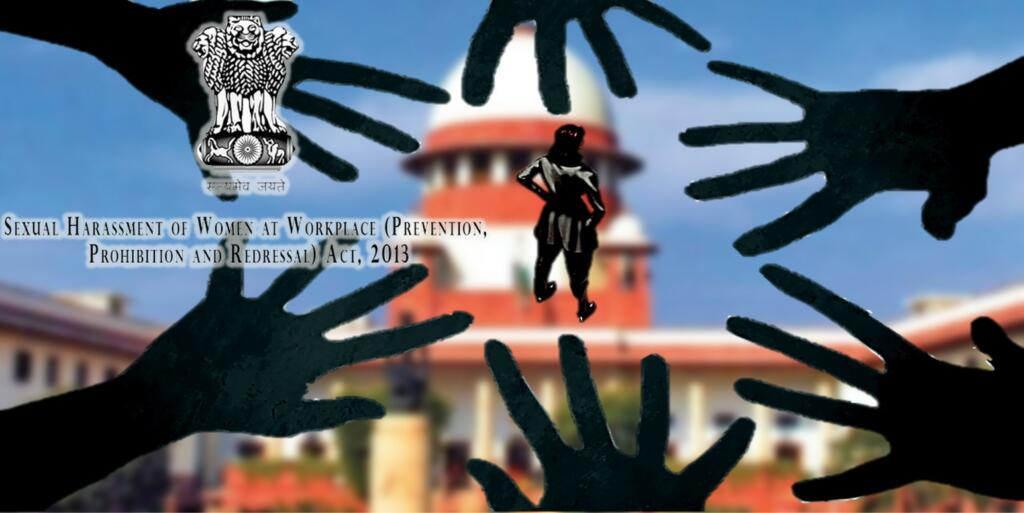Vishakha and others Vs. State of Rajasthan case: The mantra, “Samarthyamulam Swatantrayam, Shrammulam Cha Vaibhavam”, brings out the vision of New India and underlines the importance of the workforce in bringing glory to the nation. However, despite the view being endorsed by the top brass of leadership through the speech of Prime Minister Modi at the 74th Independence Day; ‘gender ‘equality’ at ground zero needs a reality check.
Having said that, ‘We’ as a nation have travelled a long way in creating a healthy and ethical workplace setting. However, much of the revolution owes it to the landmark judgment pronounced by the Supreme Court in the case of Vishakha and others Vs State of Rajasthan.
Regulation prior to Vishakha and others Vs State of Rajasthan
Sexual Harassment of women at workplace, often used synonymously with “Eve Teasing” is a still a frequent happening in India. However, the Government has also taken various measures to ensure gender justice is followed at the workplaces across the nation.
The first of the step in this direction was enacted way back in 1964, through the Rule 3 C of CCS (Conduct) Rules. The rule puts an embargo on government servants to ensure that there are no acts of sexual violence at their respective workplaces.
Background: Bhanwari Devi incident
However, the path breaking step in this direction was the issuance of the guidelines in the case of Vishaka & Others. vs. State of Rajasthan. The case enlarged the purview of protection to the women workforce even in the private professional landscape.
On the contrary, the journey leading to this gross change was rather agonizing. The Vishaka Case was filed at the behest of various social workers and NGOs, following the gruesome gang rape of Bhanwari Devi that took place in the State of Rajasthan. The accused persons were acquitted by the trail court. However, the High Court overturned the judgement made by the subordinate court but restricted the purview of the case to that of revenge aggression.
Vishaka Guidelines: Ruling made by the Bench
Following which the Writ Petition of the Vishaka Case was filed for the enforcement of the fundamental rights of working women under Articles 14, 19 and 21 of the Constitution of India. The petition drew the attention of the Supreme Court towards societal aberration.
The Bench headed by the then Chief Justice J. S Verma observed that the fundamental rights under Article 14[2], 19[3](1)(g) and 21[4] of the Constitution provides that every profession, trade or occupation should provide a safe working environment to the employees. That is to say women have fundamental right towards the freedom from sexual harassment at workplace.
The Bench exercised its powers under Article 32 and provided exhaustive 12-point guidelines against this social evil. The Bench went a step ahead to mention that the guidelines would be treated as law of the land under Article 141.
The Supreme Court in this judgment aimed at filling the vacuum in existing legislation of the time. The Court explicitly defined the term Sexual harassment and demonstrated suitable methods for realization of the true concept of ’gender equality’ in order to prevent the crimes against working women in all work places.
Also Read: Shraddha Aftab case: The horrifying consequences of dating apps in India
Enactment of POSH Act, 2013: Pertinent provisions
The judgment paved way for the enactment of the “The Sexual Harassment of Women at Workplace (Prevention, Prohibition and Redressal) Act, 2013” on 23rd April 2013, famously known as POSH Act. Further, to meet the ends of gender justice, POSH Rules, 2013 were also framed on 9th December, 2013.
Moving ahead, let’s look at the relevant provisions of the POSH Act, 2013 so as to tackle crimes against women.
The definition Section 2 (n) provides for what comprise the offence of “sexual harassment.” Further, Section 3 (2) provides the circumstances, act or behaviour that comprise the offence of sexual harassment. Similarly, Section 4 mandates the Constitution of Internal Complaints Committee by every employer.
Moreover, Sections from 9 to 11 provide for the Complaint of sexual harassment, Conciliation and Inquiry into complaint. Other significant provisions include Section 13 pertaining to Inquiry report, Section 15 providing for Determination of compensation and Section 18 for Appeals. Similarly, Section 19 casts the Duties on employers to ensure a safe working environment for women. On the contrary, Section 14 prescribes the Punishment for false or malicious complaints.
Having said that, no matter how well the legislation is drafted, its success depends heavily on the implementation mechanism. Therefore, as the crimes against women are on a rise, more stringent law enforcement mechanisms need to be put in place.
Support TFI:
Support us to strengthen the ‘Right’ ideology of cultural nationalism by purchasing the best quality garments from TFI-STORE.COM
Also Watch:
https://www.youtube.com/watch?v=cuFNVrhC0Ss
